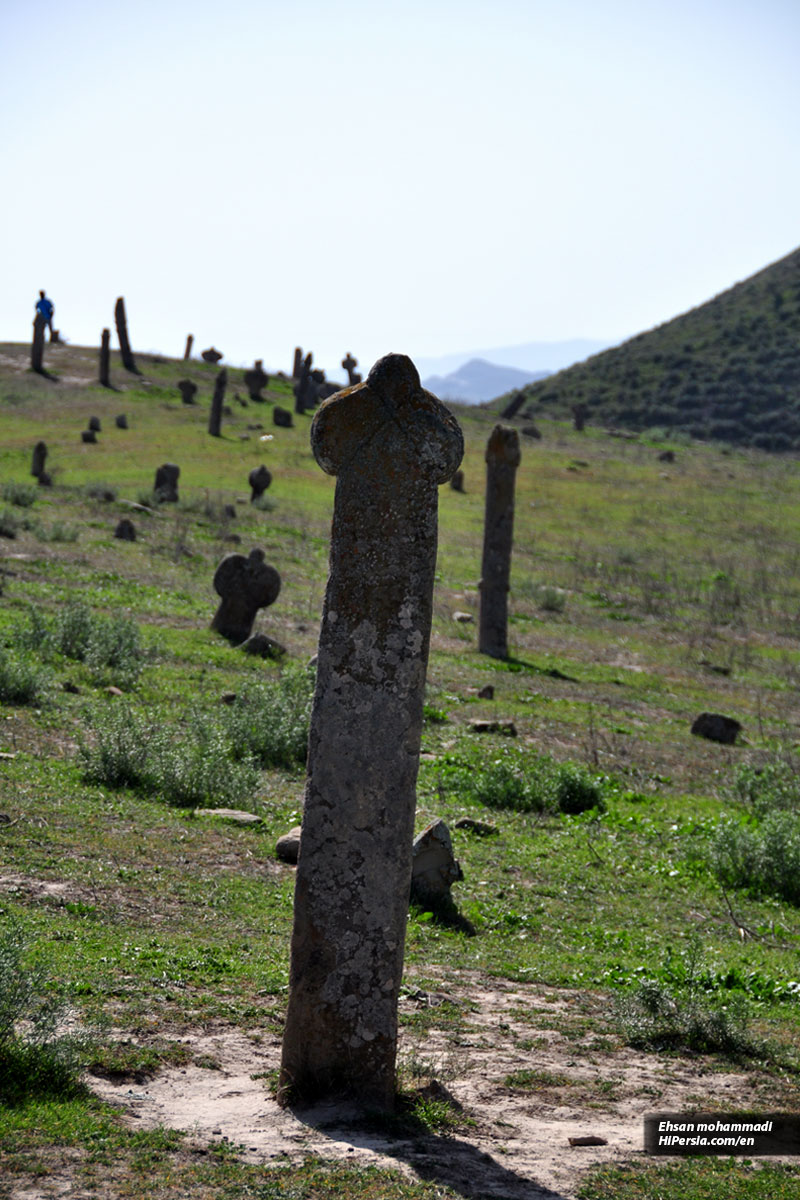



The Khalid Nabi Cemetery is an off the beaten place in the city of Gonbad, famed for its unique gravestones.
A cemetery, which is located near the Khalid Nabi shrine and is known as the Khalid Nabi cemetery, is undoubtedly one of the most mysterious places in Iran!

The historical site of Khalid Nabi is a complex of several pilgrimage sites and a cemetery. This complex is located in the mountainous areas of Golestan province, is a burial site for Khalid Nabi, as well as a host of small and large gravestones. All these attractions, along with the spectacular scenery of the surrounding countryside, have made this area a major tourist attraction in the north of the country.
As mentioned, the Khalid Nabi cemetery is located in the mountainous region of Golestan province, 90 kilometers from Gonbad-e Kavous city, in the Gokcheh Dagh hills of Turkmen Sahra. The summit of Gokcheh Dagh hills, which has a height of 720 meters, is one of the mountains in this region known as the peak of power among the locals.
A little further away from the shrine of Khalid Nabi, on another hill of this region, so many gravestones are placed next to each other and sporadically rise from the ground. According to documents and evidence, the history of this cemetery dates back to the Paleolithic period, thousands of years ago. It also seems that the number of these gravestones was initially about 600.

There are different theories for the specific shape of these gravestones. Some believe that the large gravestones symbolize men with hats on their heads and shawls on their waists, as well as the small gravestones represent women's graves. On the other hand, in one theory, these large and small gravestones are attributed to the organs of men and women.
Some local narratives say that the taller cylindrical rocks are shepherds and the rest of their sheep! During the Mongol invasion, the Turkmen herders asked God to die and did not fall into the hands of the Mongols, which became the stone.

The gravestones of the Khalid Nabi cemetery are generally sorted into two types as follows:
Type one: The cylindrical column gravestone with a cape-like top and heights between 60 cm to 4 m. Many of them have horizontal ribs on the shaft. This type of gravestone is interpreted as depictions of men with their caps, helmets, and in some cases, with clearly visible turbans, pointing to parallels in Turkic Ottoman grave markers.

Type two: This type of gravestone is generally smaller. They have rectangular sections and two opposed high-set lobes. This type of gravestone is interpreted as the female's graves.

Due to the pleasant weather and the hills coated by green lushes during spring and the geographical situation in the Turkmen Sahara, the best time to visit there is between April and May, as well as the fall season.

After driving about 40 kilometers from Gonbad-e Kabus to Kalaleh, you must head towards the Gachisoo village. The distance from Kalaleh to Khalid Nabi cemetery is about 55 kilometers. From the Gachisoo village to the Khalid Nabi cemetery is about six kilometers, and you must pass through the dirt road.






“Oh! Squander not this breath that Heaven hath lent thee, Nor make too sure another breath to borrow!’” Khayam